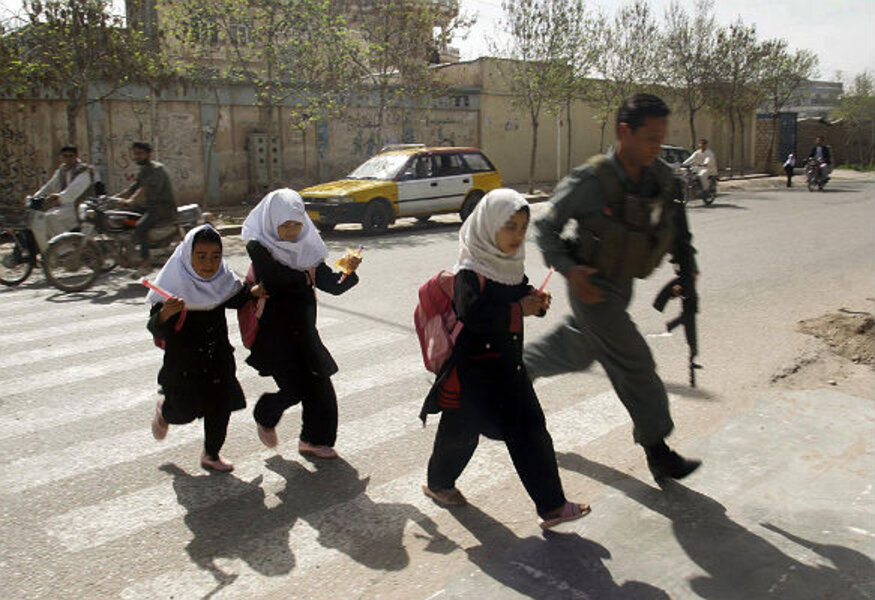Education in the crosshairs of global conflict
Loading...
In the early hours of Tuesday morning, militants of the extremist group Boko Haram walked onto the campus of a boarding school in northeastern Nigeria, locked up students sleeping in their dormitories, and torched the buildings. They spared the girls, reportedly sending them off with one message: go home, forget school, and get married instead.
The attack left at least 59 people dead, most of them teenage boys and young men, with scores more injured.
Such acts of violence against students and schools are increasingly a tactic of modern warfare, says a new report released today by an organization committed to combating the trend, the Global Coalition to Protect Education from Attack. The study updates and expands earlier reports on the topic published by UNESCO in 2010 and 2007.
There's not enough comparison data yet to point definitely to a heightened incidence of education-targeted attacks. But the authors argue that the problem is “far more widespread than previously reported.”
“Schools, students, and staff are not just caught in the crossfire, but are all too often the targets of attacks,” Diya Nijhowne, the Global Coalition's director, said in a statement. “They are soft, easy targets, and governments and armed groups need to protect them from being used as a tactic of war.”
Below are three main takeaways from the report.
Schools are not collateral damage: they're the target
Schools and students are targeted for reasons that range from politics and ideology to ethnicity and religion. The unifying trend is a pattern of deliberate attacks, which the report identifies in 30 countries. “Often, sectarian violence is fought out in the schoolyard,” the authors say.
And it’s not just students who are coming under attack. Teachers, education and government officials, and even aid workers are in the fray. Education ministries have become bombing targets (Somalia), and teachers face the risk of abduction and assassination (Afghanistan, Pakistan, Iran, Colombia, and others).
Among the most affected are, not surprisingly, countries torn by civil conflicts, such as Syria and South Sudan. The reports also identifies a “sharp rise” in violence and military use of schools in some post-Arab-Spring countries.
Militants aren't the only ones putting students in danger
Militant non-state groups such as Boko Haram remain primary offenders. From Nigeria to Pakistan, their goals span the spectrum of ideology and religion: undermine state control, prevent the education of girls, reject “pro-Western” school curricula.
But threats also come from government security forces. They often take over schools for military purposes, convert them into bases, barracks, armories, and prisons. At best, this means canceled classes. At worst, it puts students' lives in danger.
“In Syria, 1,000 schools have allegedly been used as detention or torture centers,” the coalition said in its press release. “Buildings that should have been safe spaces for learning became actual battlefields when military use made them a target for attack.”
Turning the tide is an enormous challenge
The report calls on countries to launch a major push to curb the violence. One specific step would be to adopt the so-called “Lucens Guidelines” for protecting educational institutions from military use during armed conflict. But these guidelines are still in draft form, and need support from state and non-state actors to finalize, adopt, and implement.
Other solutions come with similarly distant time horizons. One proposal is to negotiate with "belligerent parties to respect schools as safe zones.” But this may prove impossible in conflict zones when warring sides are locked into life-or-death struggles. And others, including building respect for ethnic and religious diversity, will take many decades and many generations of students to realize.








